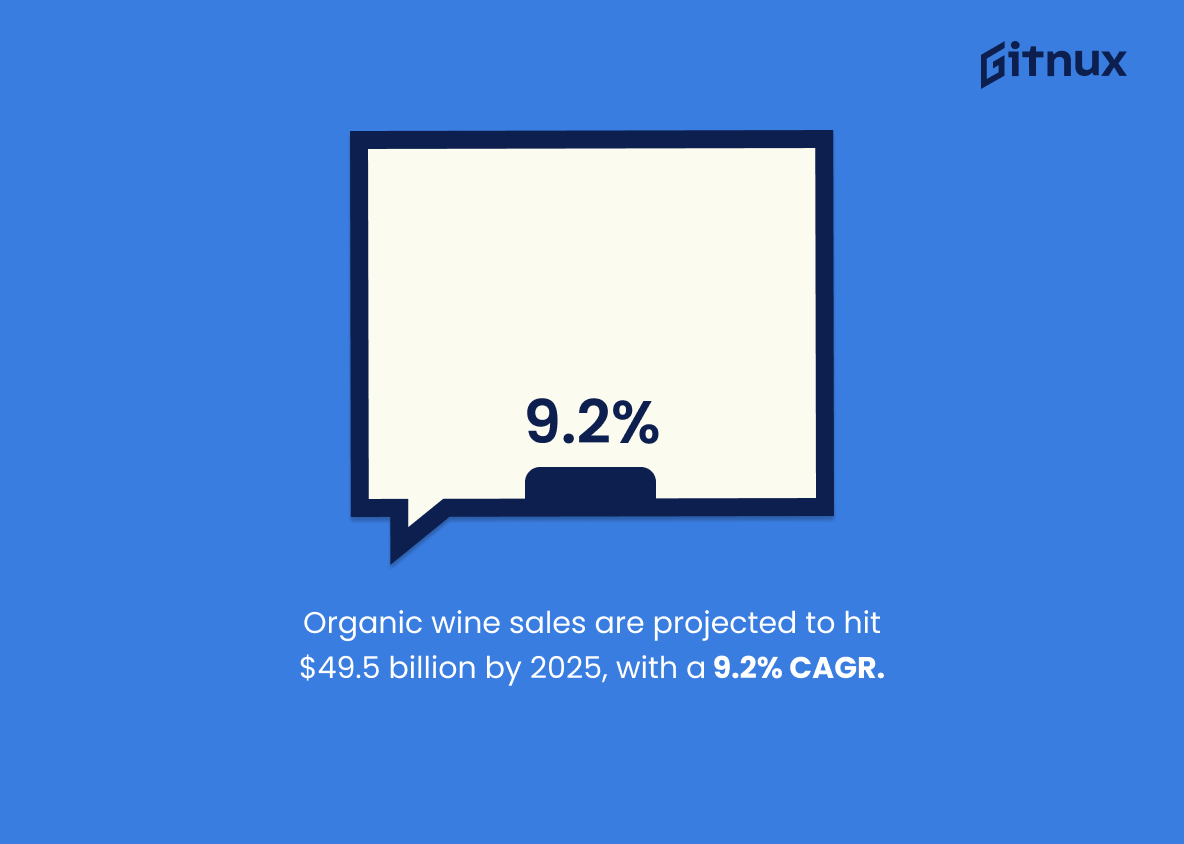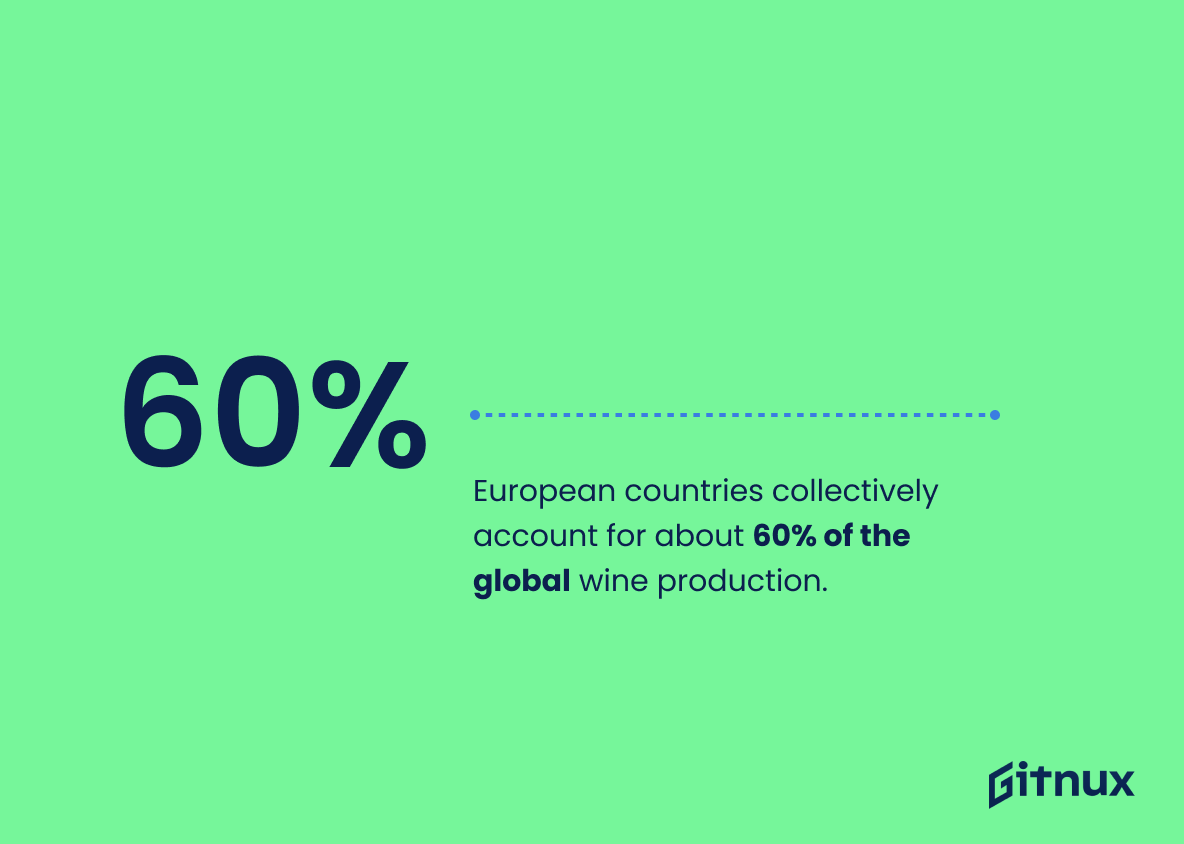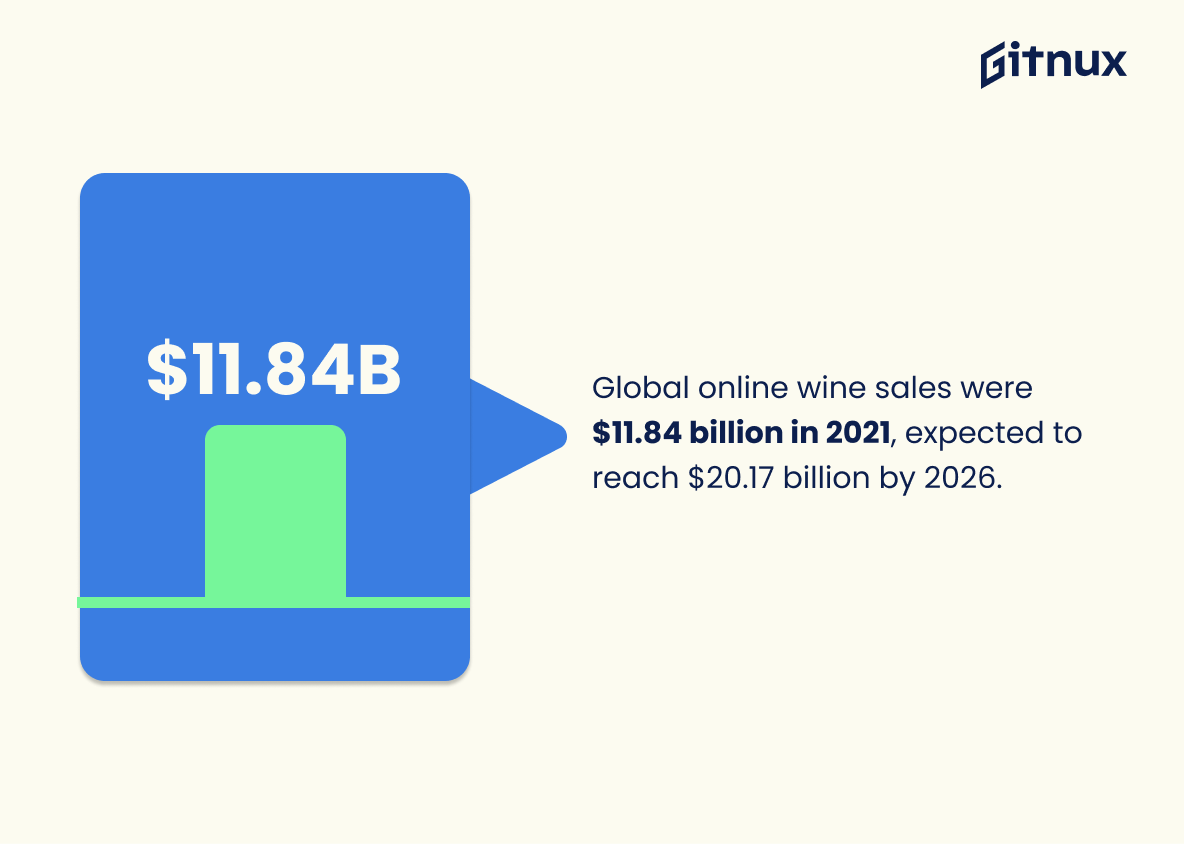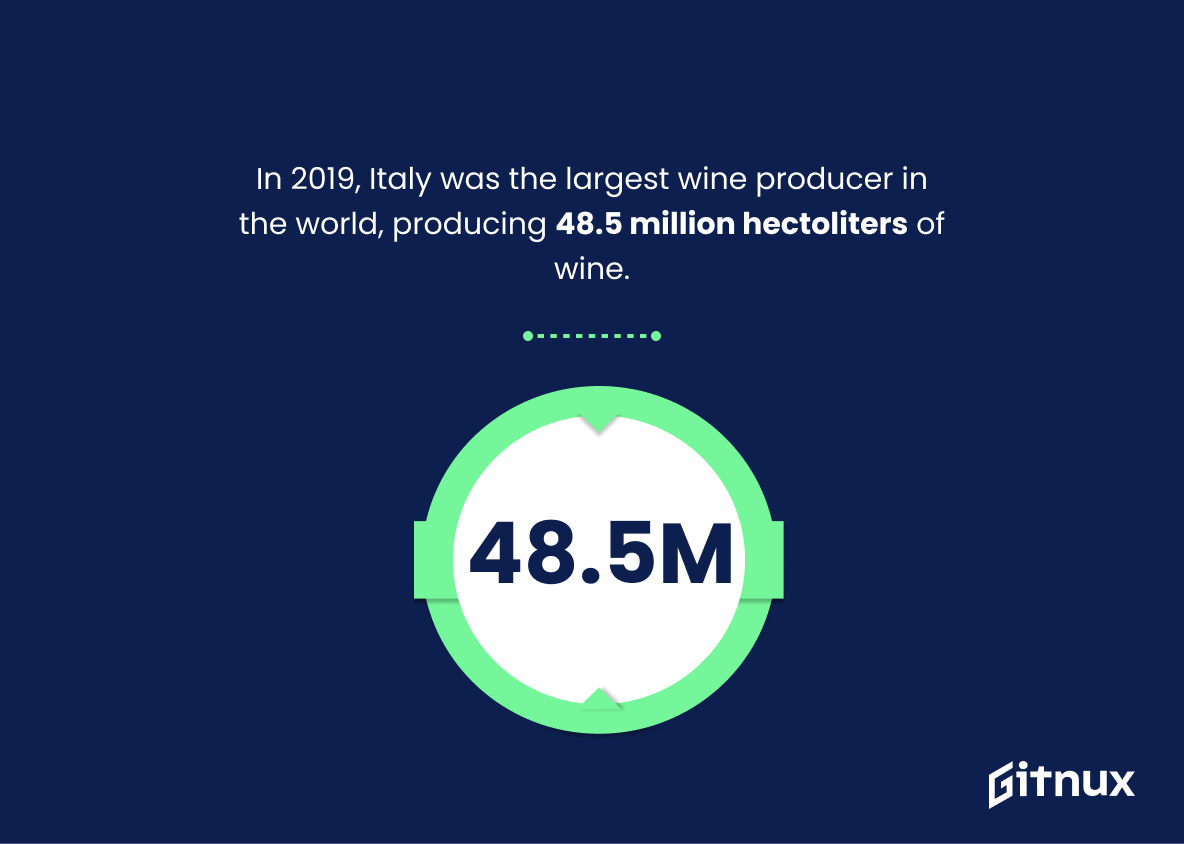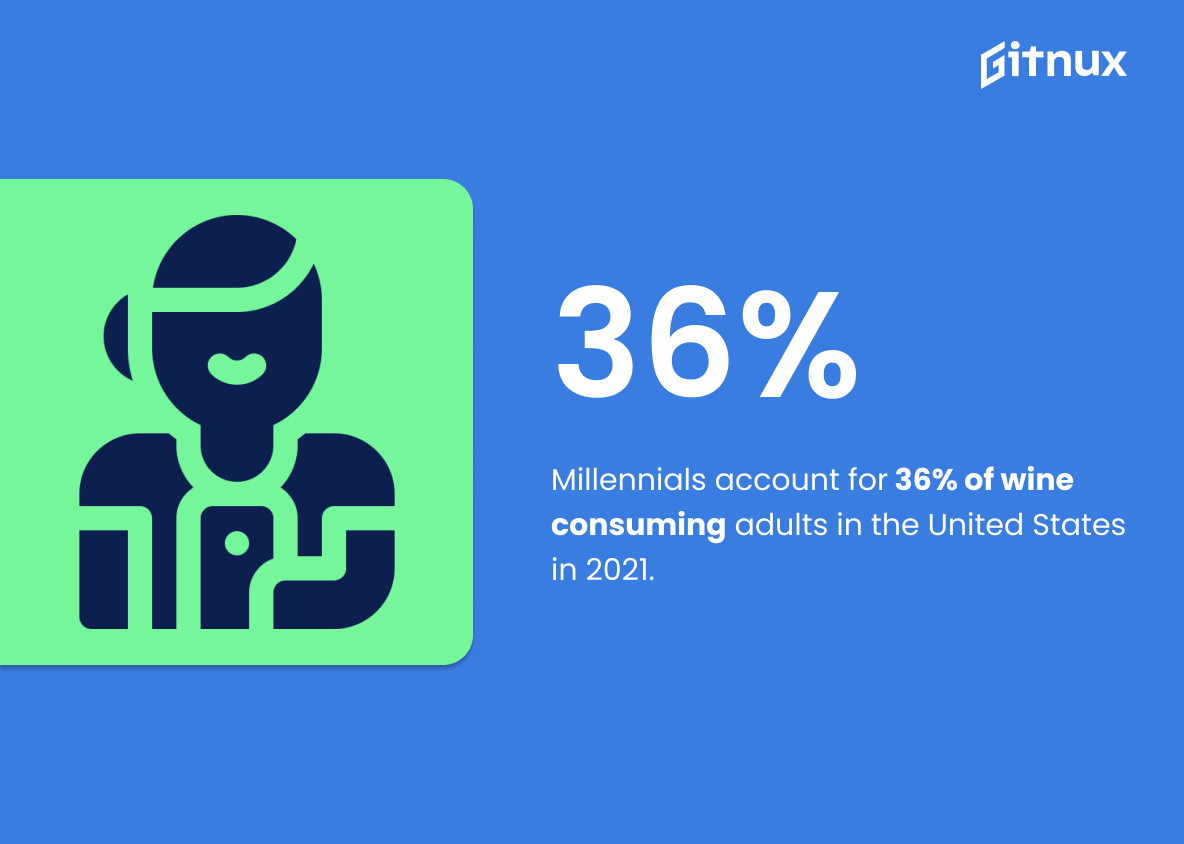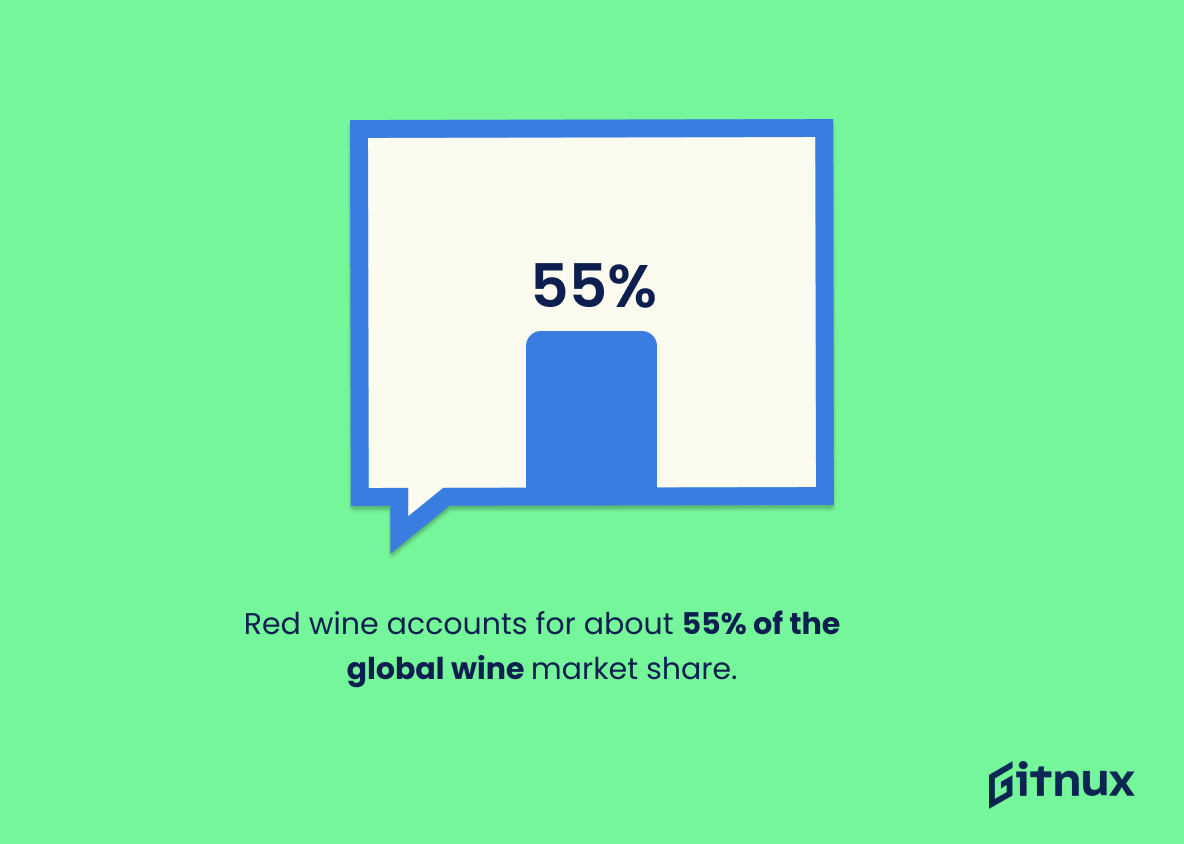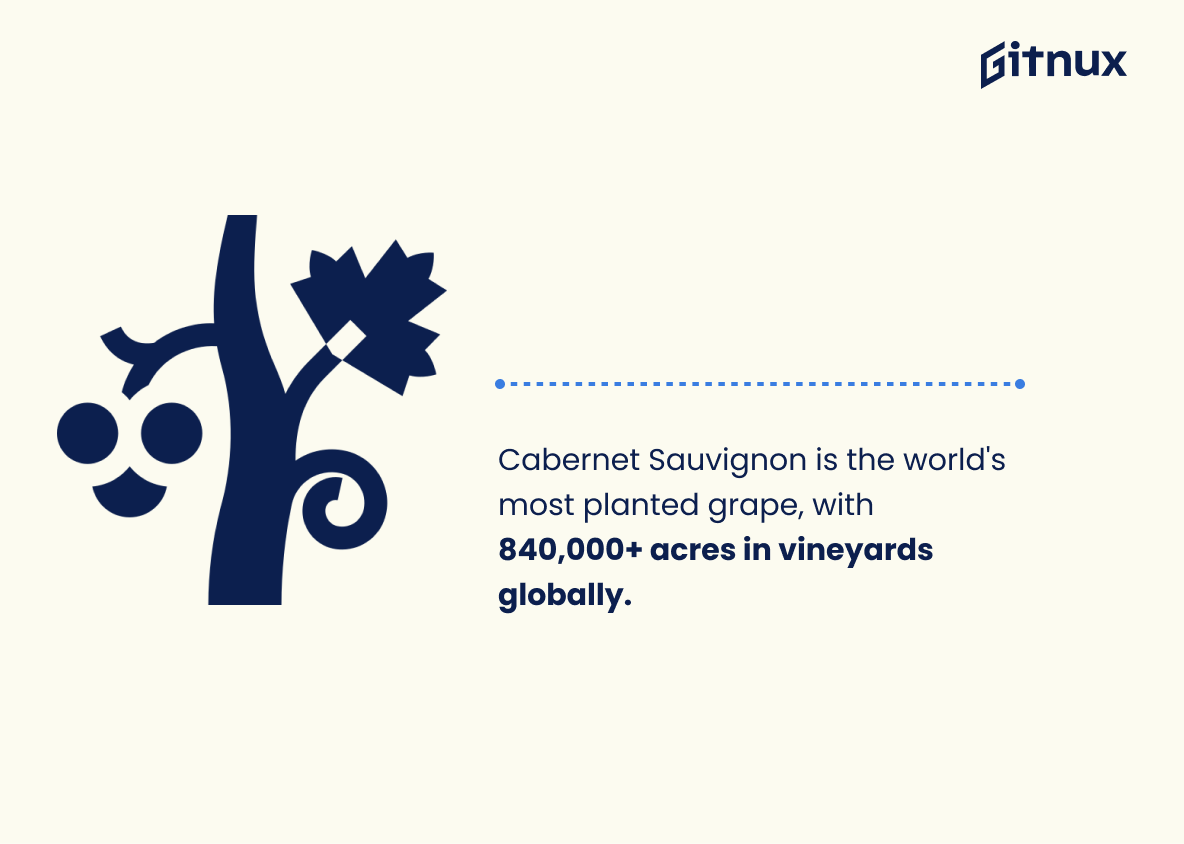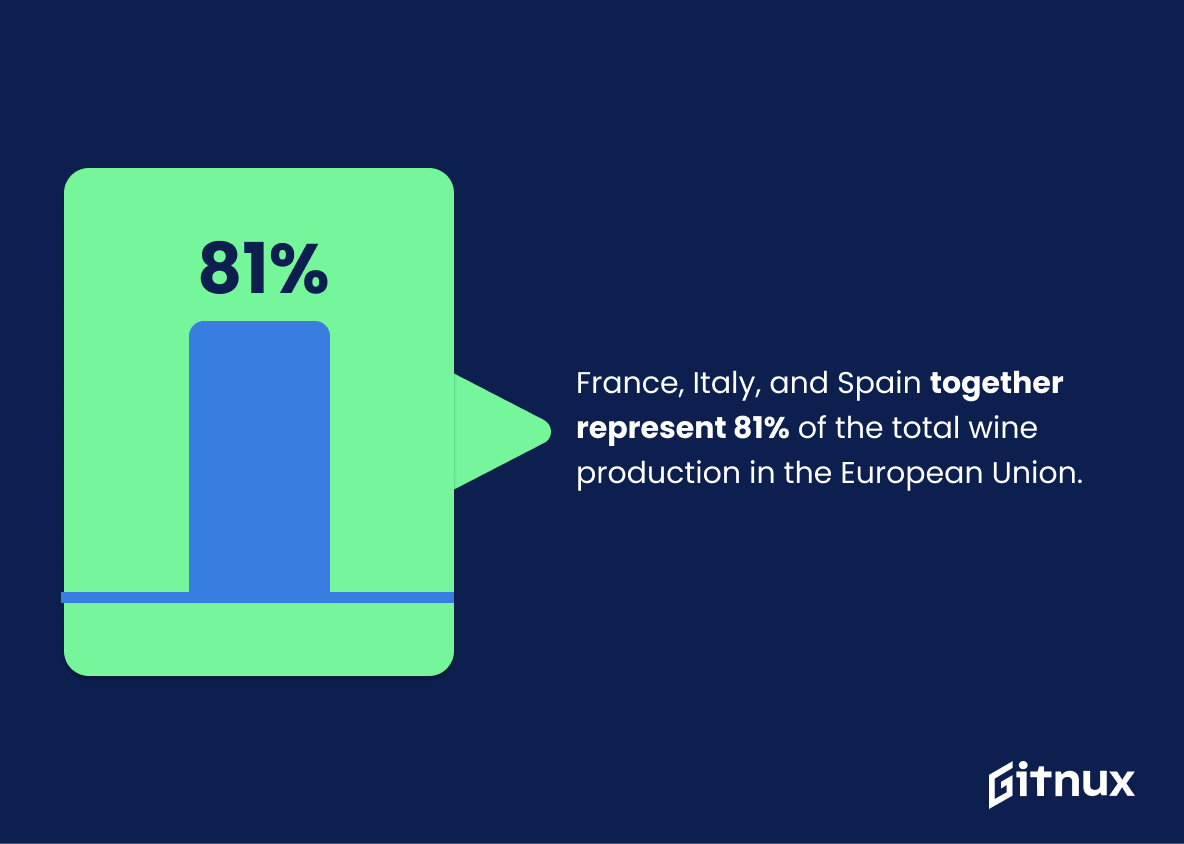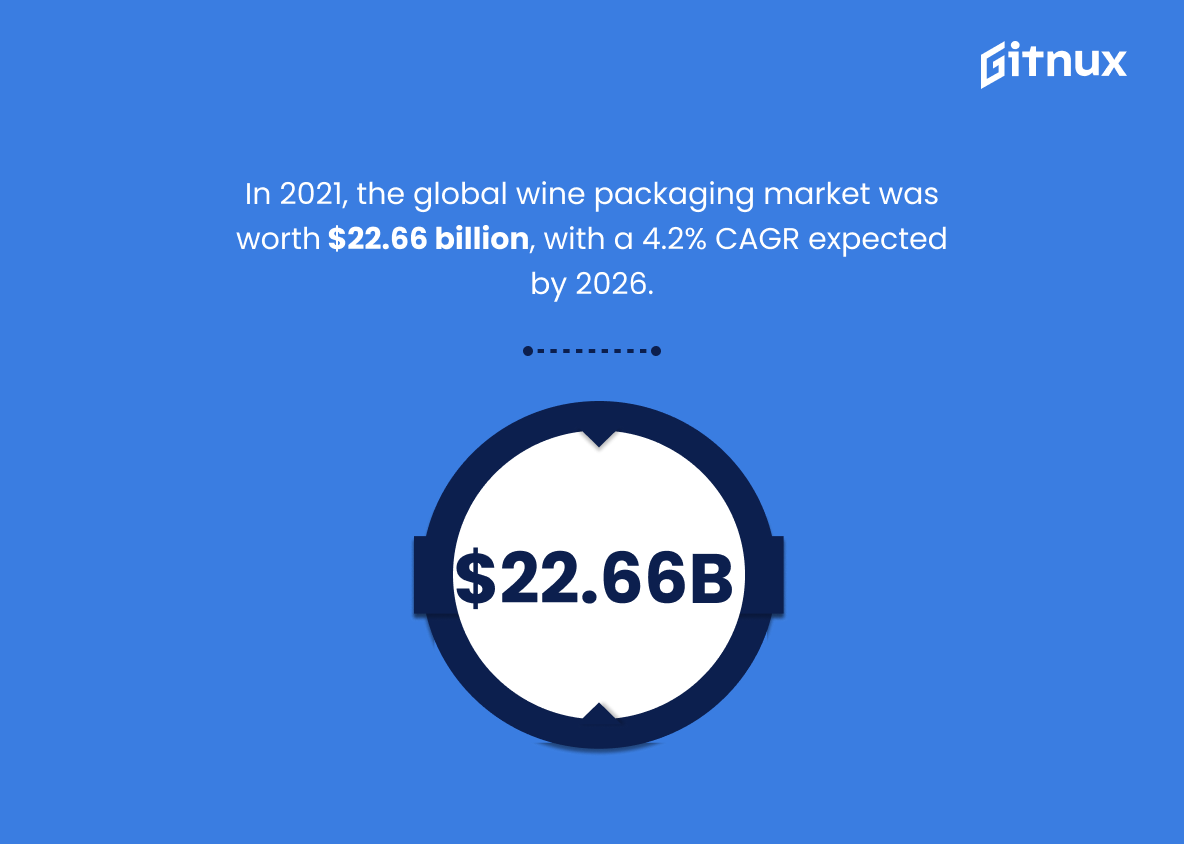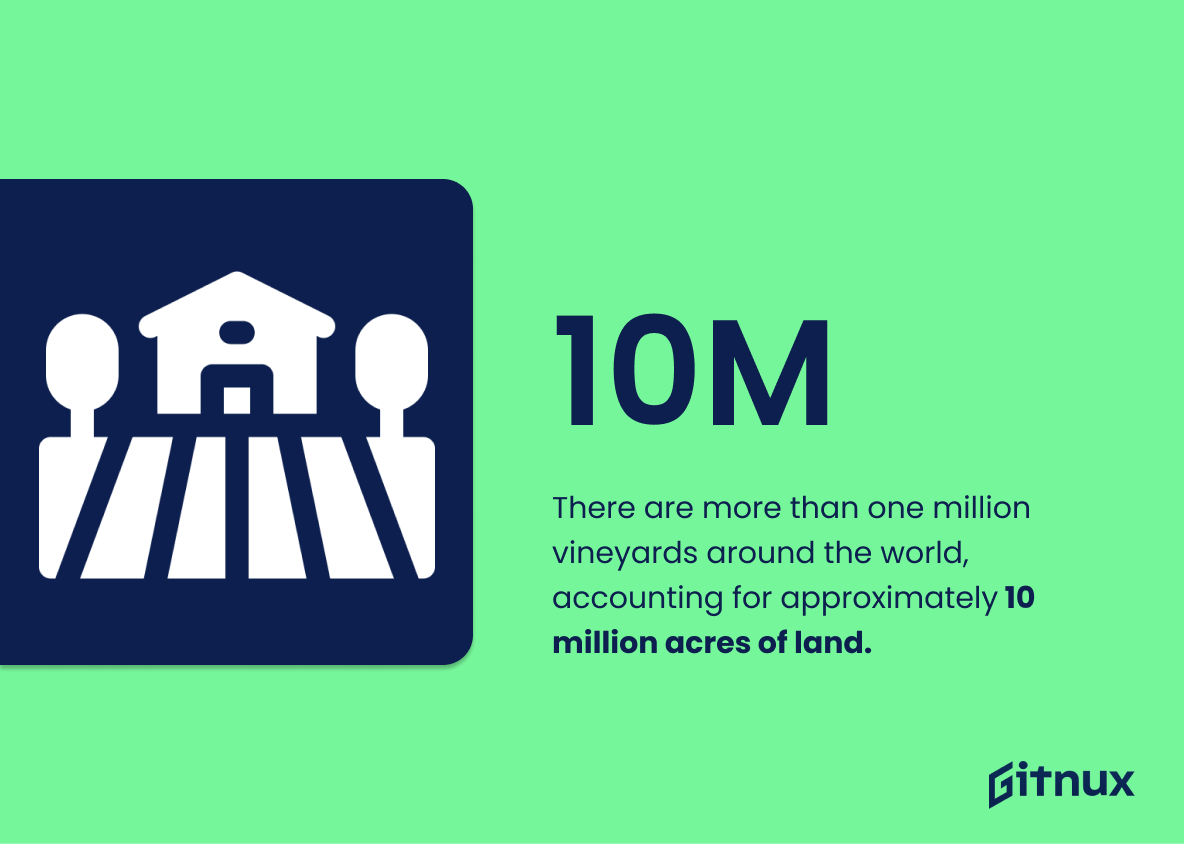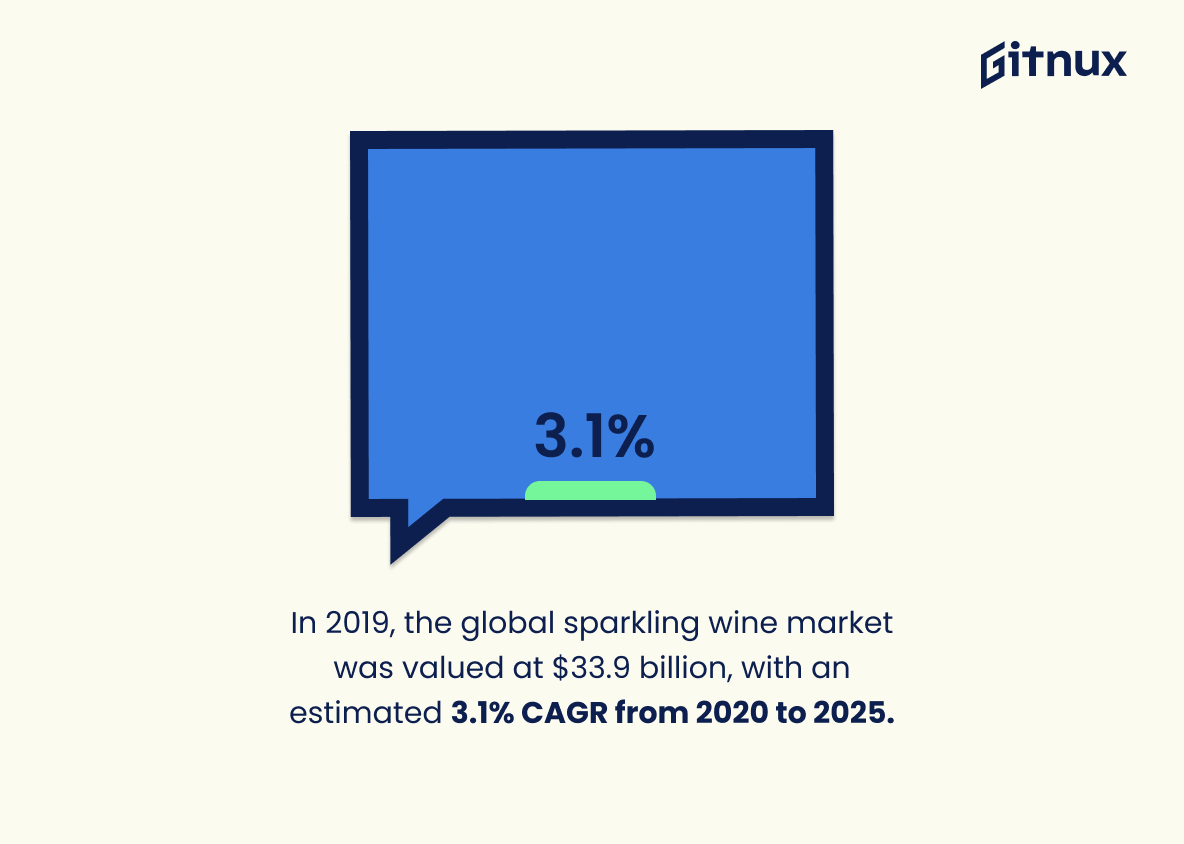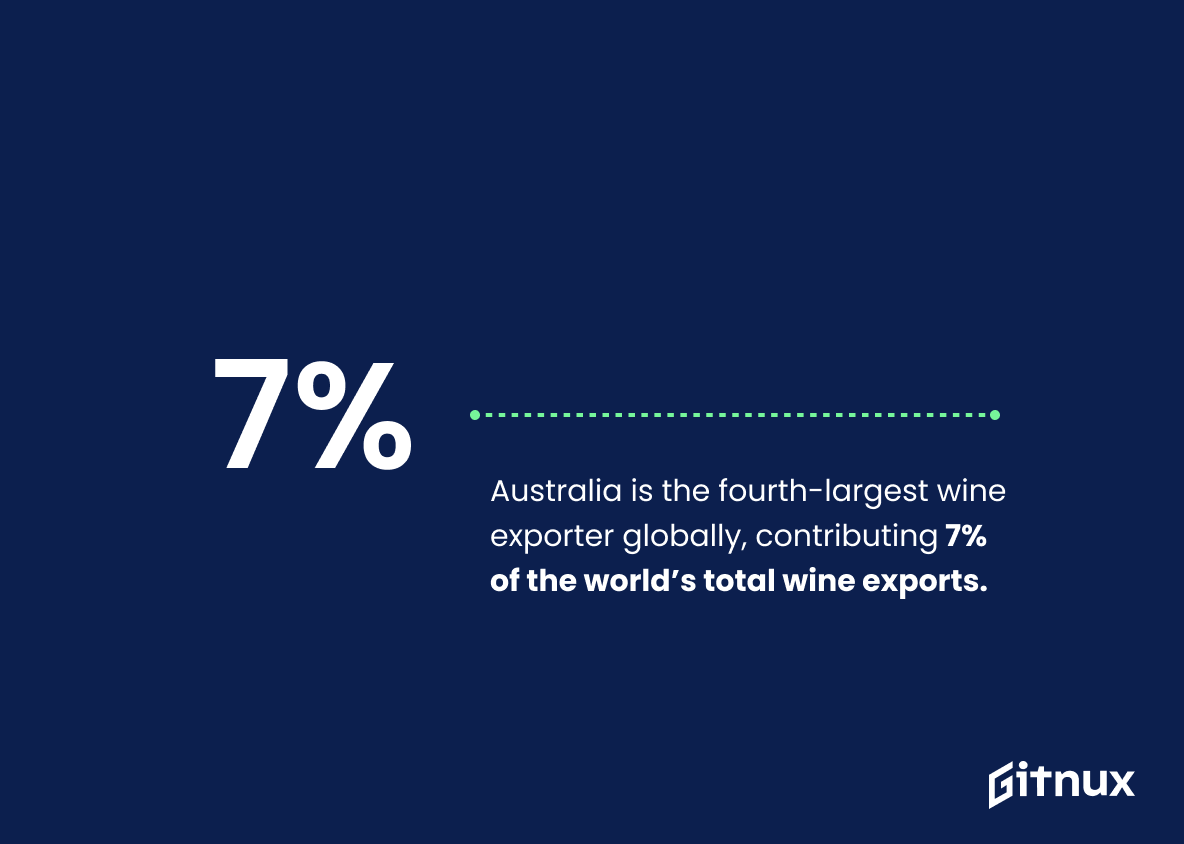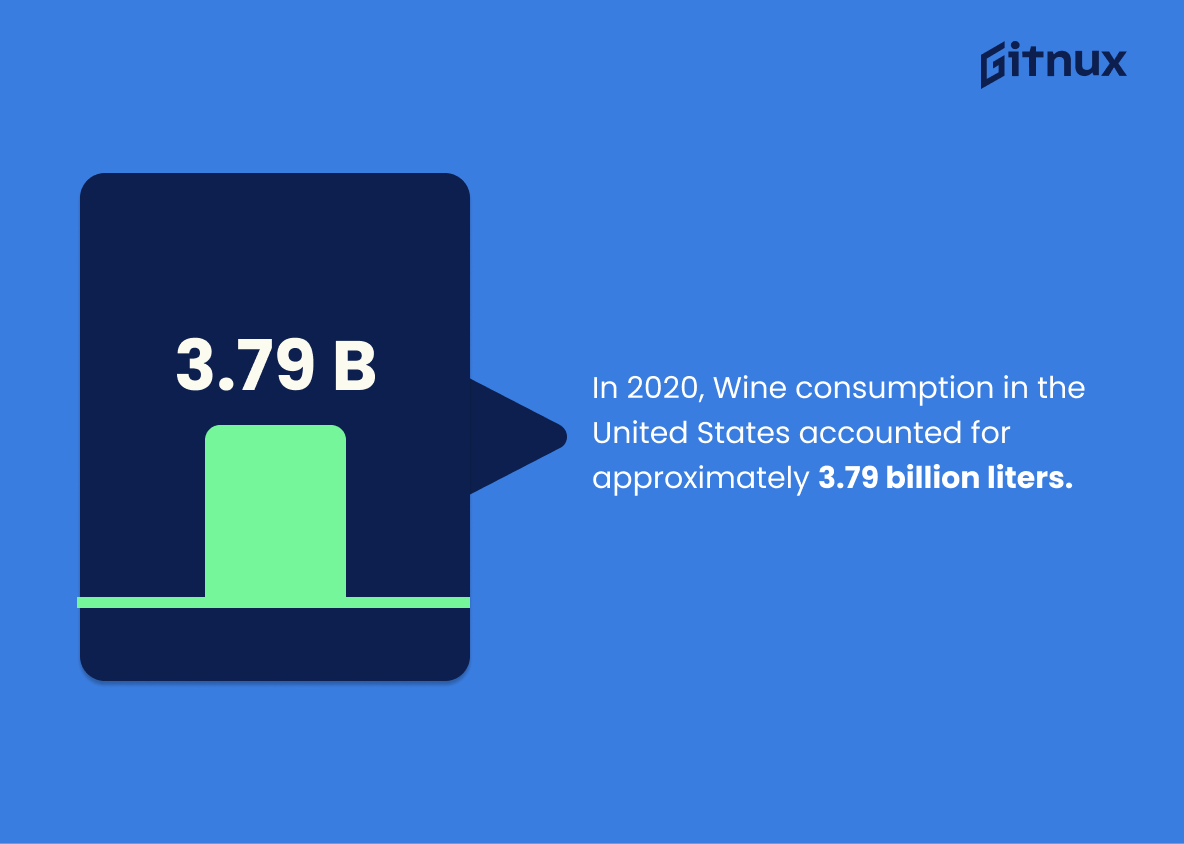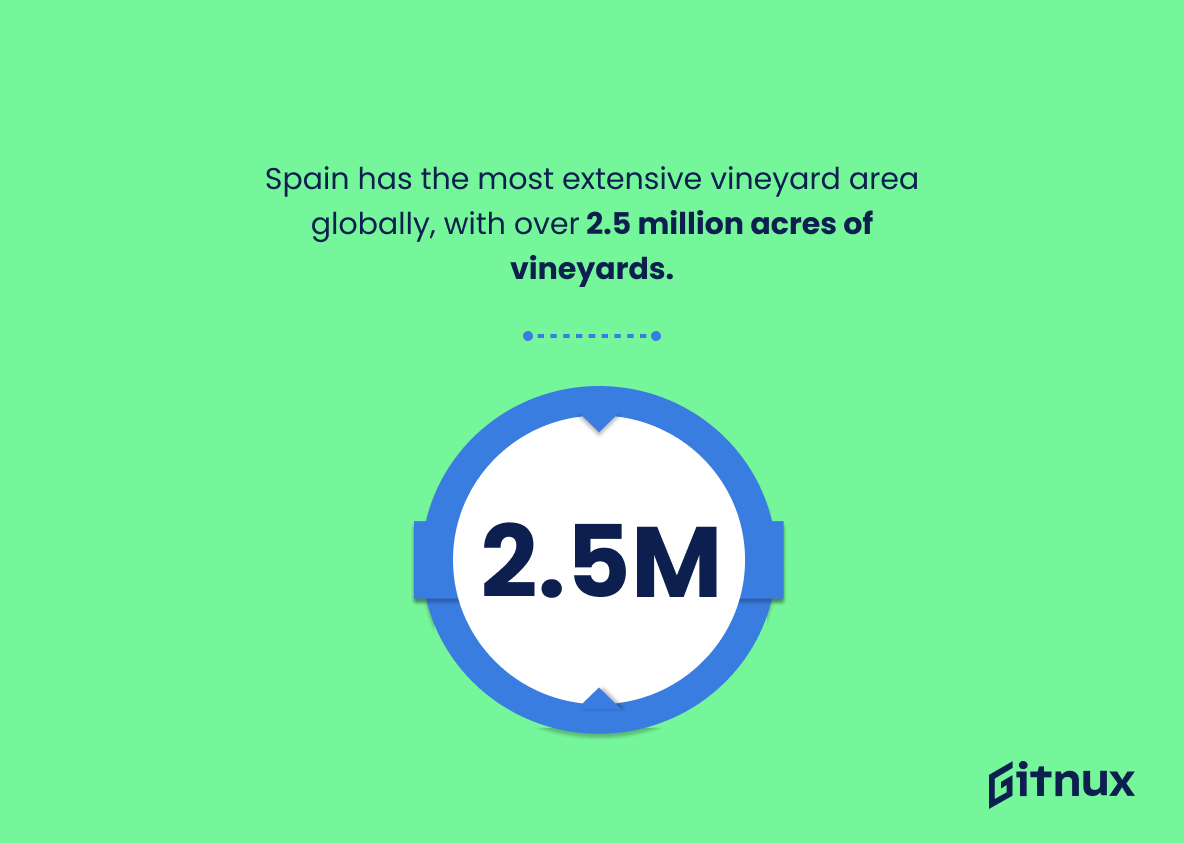The global wine industry is a rapidly growing market, with the total value of the sector estimated to reach USD 326.53 billion in 2020 and expected to grow at a compound annual growth rate (CAGR) of 4.4% during 2021-2026. The United States remains the largest consumer, accounting for 13% of global consumption while organic wine sales are projected to reach USD 49.5 billion by 2025 due to increasing demand from health-conscious consumers worldwide.
China is also emerging as an important player in this market, becoming the fifth-largest consuming nation and predicted to become third by 2025. Europe collectively accounts for 60% of world production while Italy was identified as its biggest producer in 2019 with 48 million hectoliters produced that year alone.
Millennials have been driving much of this growth; they account for 36 percent of all adult wine drinkers in America today and red wines remain popular among them representing 55 percent share globally according Cabernet Sauvignon being one most widely planted grape variety covering over 840 thousand acres around world vineyards combined together making up 10 million acres land area overall . France ,Italy & Spain represent 81 %of EU’s total production whereas Australia stands fourth largest exporter contributing 7%. Argentina ranks tenth exporting 224 million liters last year US consumed 3 79 Billion Litres Wine online retailing has seen tremendous surge 19 % Global Sales compared 8 % previous Year .
This statistic is a crucial indicator of the potential for growth in the global wine market. It suggests that the industry is likely to experience a steady increase in demand over the next five years, making it an attractive investment opportunity for those looking to capitalize on the industry’s growth. This statistic is a key piece of information for anyone interested in the global wine industry, as it provides a glimpse into the future of the industry and the potential for success.
The global wine market was valued at USD 326.53 billion in 2020.
This statistic is a testament to the immense size and scope of the global wine market. It highlights the fact that the wine industry is a major player in the global economy, with a market value of over USD 326 billion. This figure is a clear indication of the industry’s importance and its potential for growth in the future. It is also a reminder of the immense potential for businesses to capitalize on the industry’s success and make a profit.
Global Wine Industry Statistics Overview
The United States is the largest wine consumer, accounting for 13% of the global wine consumption.
This statistic is a testament to the immense influence the United States has on the global wine industry. It highlights the fact that the US is a major player in the wine market, and its consumption habits have a direct impact on the industry as a whole. This is an important point to consider when discussing the global wine industry, as it demonstrates the importance of the US in the industry.
Organic wine sales are expected to reach USD 49.5 billion by 2025, growing at a compound annual growth rate (CAGR) of 9.2%.
This statistic is a testament to the increasing popularity of organic wine, which is expected to reach a staggering USD 49.5 billion by 2025. This growth rate of 9.2% CAGR is indicative of the growing demand for organic wine, which is a key factor in the global wine industry. This statistic is a valuable insight into the current state of the global wine industry and provides a glimpse into the future of the industry.
European countries collectively account for about 60% of the global wine production.
This statistic is a testament to the immense influence European countries have on the global wine industry. It highlights the fact that European countries are major players in the production of wine, and their output is a significant factor in the overall production of wine worldwide. This statistic is an important reminder of the importance of European countries in the global wine industry, and it is a key piece of information for anyone looking to gain a better understanding of the industry.
The global online wine sales market was valued at USD 11.84 billion in 2021 and is expected to reach USD 20.17 billion by 2026.
This statistic is a testament to the immense potential of the global wine industry. It shows that the market is growing at a rapid pace, with online sales expected to more than double in the next five years. This indicates that the industry is ripe for investment and expansion, and that there are plenty of opportunities for businesses to capitalize on. As such, this statistic is an invaluable insight into the current state of the global wine industry and its future prospects.
In 2019, Italy was the largest wine producer in the world, producing 48.5 million hectoliters of wine.
This statistic is a testament to the sheer magnitude of Italy’s wine production, highlighting its dominance in the global wine industry. It is a powerful reminder of the country’s long-standing tradition of winemaking and its commitment to producing quality wines. This statistic is an important indicator of the health of the global wine industry, and it is essential for anyone interested in the industry to be aware of it.
Millennials account for 36% of wine consuming adults in the United States in 2021.
This statistic is a telling indication of the growing influence of Millennials in the wine industry. It highlights the importance of catering to the needs and preferences of this demographic in order to remain competitive in the global wine market. Furthermore, it suggests that Millennials are increasingly becoming the driving force behind the growth of the wine industry, making it essential for businesses to understand their habits and preferences in order to capitalize on this trend.
Red wine accounts for about 55% of the global wine market share.
This statistic is a testament to the immense popularity of red wine, highlighting its dominance in the global wine market. It is a key indicator of the current state of the global wine industry, and provides insight into the preferences of wine drinkers around the world.
Cabernet Sauvignon is the most widely planted grape variety in the world, covering over 840,000 acres of vineyards worldwide.
The fact that Cabernet Sauvignon is the most widely planted grape variety in the world, with over 840,000 acres of vineyards, is a testament to its popularity and success in the global wine industry. This statistic is indicative of the fact that Cabernet Sauvignon is a highly sought-after variety, and its widespread cultivation is a reflection of its success in the market. This statistic is an important one to consider when discussing the global wine industry, as it provides insight into the preferences of wine drinkers around the world.
France, Italy, and Spain together represent 81% of the total wine production in the European Union.
This statistic is a powerful indicator of the immense influence that France, Italy, and Spain have on the European Union’s wine production. It highlights the fact that these three countries are the major players in the global wine industry, and that their collective output is a major factor in the overall production of wine in the European Union. This statistic is an important reminder of the importance of these countries in the global wine industry, and the need to understand their production and consumption patterns in order to gain a better understanding of the industry as a whole.
In 2021, the global wine packaging market was valued at approximately USD 22.66 billion and is expected to grow at a CAGR of 4.2% until 2026.
This statistic is a telling indication of the immense potential of the global wine packaging market. It reveals that the market is currently worth a staggering USD 22.66 billion and is projected to grow at a CAGR of 4.2% over the next five years. This is a clear indication that the global wine industry is thriving and is likely to continue to do so in the foreseeable future. Thus, this statistic is an important piece of information for anyone looking to gain insight into the current state and future prospects of the global wine industry.
There are more than one million vineyards around the world, accounting for approximately 10 million acres of land.
This statistic is a testament to the sheer size and scope of the global wine industry. It speaks to the immense amount of land dedicated to vineyards, and the sheer number of vineyards around the world. It is a powerful reminder of the impact the wine industry has on the global economy and the environment.
In 2019, the global sparkling wine market was valued at approximately USD 33.9 billion and is estimated to grow at a CAGR of 3.1% between 2020 and 2025.
This statistic is a telling indication of the immense potential of the global sparkling wine market. It reveals that the market is currently worth a staggering USD 33.9 billion and is projected to grow at a CAGR of 3.1% over the next five years. This is a clear indication that the global wine industry is thriving and is likely to continue to do so in the foreseeable future.
Australia is the fourth-largest wine exporter globally, contributing 7% of the world’s total wine exports.
This statistic is a testament to Australia’s significance in the global wine industry. It highlights the country’s impressive contribution to the world’s total wine exports, placing it among the top exporters. This is a powerful indicator of the country’s success in the wine industry and its potential to continue to be a major player in the global market.
In 2020, Wine consumption in the United States accounted for approximately 3.79 billion liters.
This statistic is a telling indication of the immense popularity of wine in the United States. It speaks to the fact that wine is a widely consumed beverage in the country, and that the global wine industry is thriving. It is a key piece of information that provides insight into the current state of the wine industry and its potential for growth.
Spain has the most extensive vineyard area globally, with over 2.5 million acres of vineyards.
This statistic is a testament to the sheer size and scope of Spain’s wine industry. It highlights the country’s dominance in the global wine market, with its expansive vineyard area dwarfing that of other countries. This statistic is a powerful reminder of the importance of Spain’s wine industry and its impact on the global wine industry.
In 2020, e-commerce sales represented 19% of global wine retail sales, up from 8% in 2019.
This statistic is a clear indication of the growing importance of e-commerce in the global wine retail market. It shows that the industry is rapidly adapting to the digital age, with more and more consumers turning to online platforms to purchase their wine. This shift in consumer behavior has had a significant impact on the industry, and it is likely to continue to shape the global wine market in the years to come.
Conclusion
The global wine industry is a rapidly growing market, with the total value of the market expected to reach USD 326.53 billion in 2020 and grow at a CAGR of 4.4% during 2021-2026. The United States remains the largest consumer, accounting for 13% of global consumption while organic wine sales are projected to reach USD 49.5 billion by 2025 due to increasing demand from millennials who account for 36% of adult consumers in 2021.
Europe collectively accounts for 60% of production while China is set to become the third-largest consuming nation by 2025 and Australia ranks as fourth-largest exporter globally contributing 7%. Red wines dominate 55%, followed closely by Cabernet Sauvignon which covers over 840,000 acres worldwide; however sparkling wines have seen an increase in popularity with its estimated worth reaching 33.9 billion dollars in 2019 and ecommerce sales representing 19 percent growth since 2019 alone . With more than one million vineyards covering 10 million acres around the world it’s clear that this industry has plenty room left for further expansion making it an attractive investment opportunity going forward into 2026.
References
0. – https://www.gminsights.com
1. – https://www.wineinmoderation.eu
2. – https://www.researchandmarkets.com
3. – https://www.mordorintelligence.com
4. – https://www.globenewswire.com
5. – https://www.worldatlas.com
6. – https://www.wineintelligence.com
7. – https://www.rabobank.nl
8. – https://www.australianwine.com
9. – https://www.winespectator.com
10. – https://www.statista.com
11. – https://www.ec.europa.eu
12. – https://www.guildsomm.com
13. – https://www.reportlinker.com

